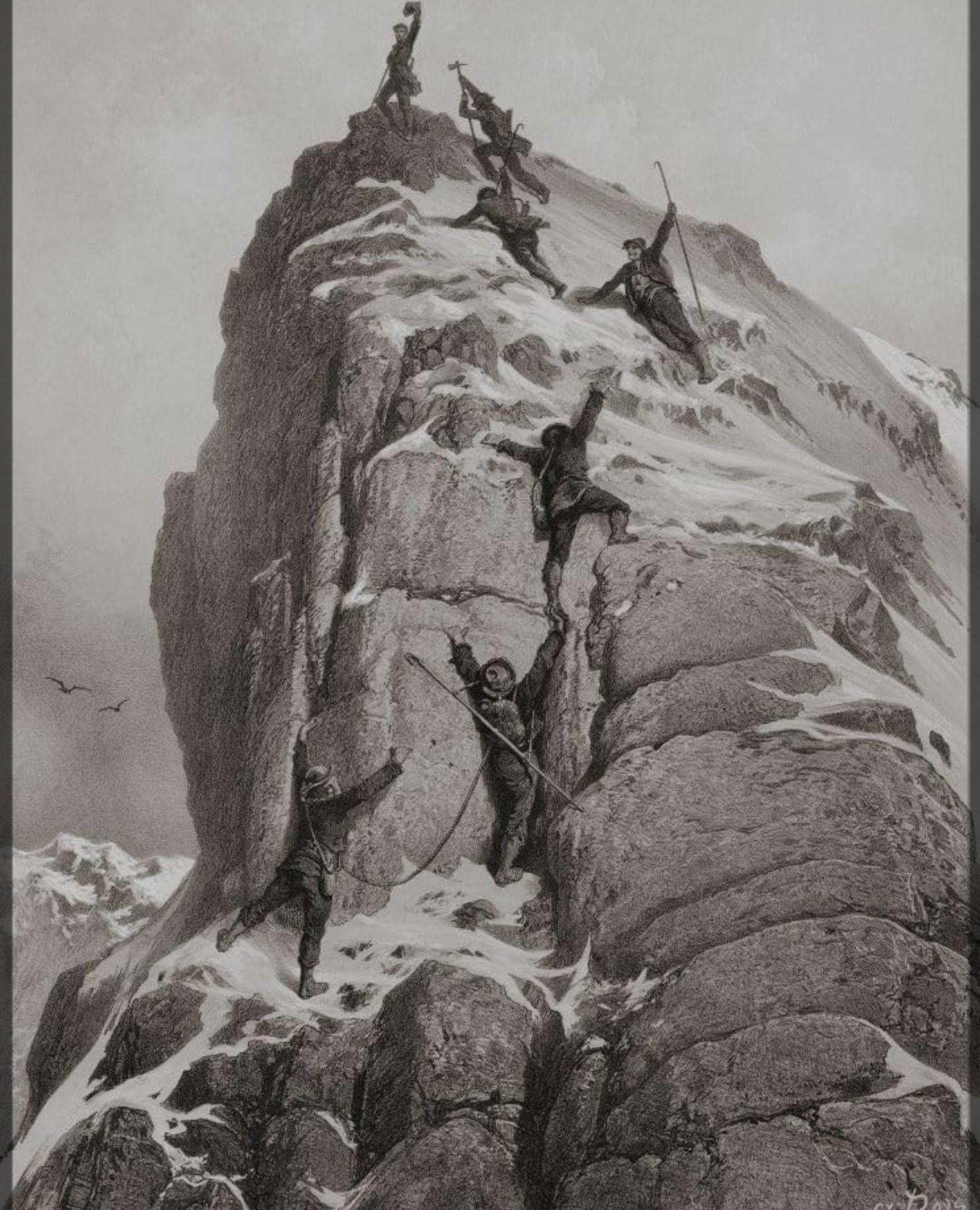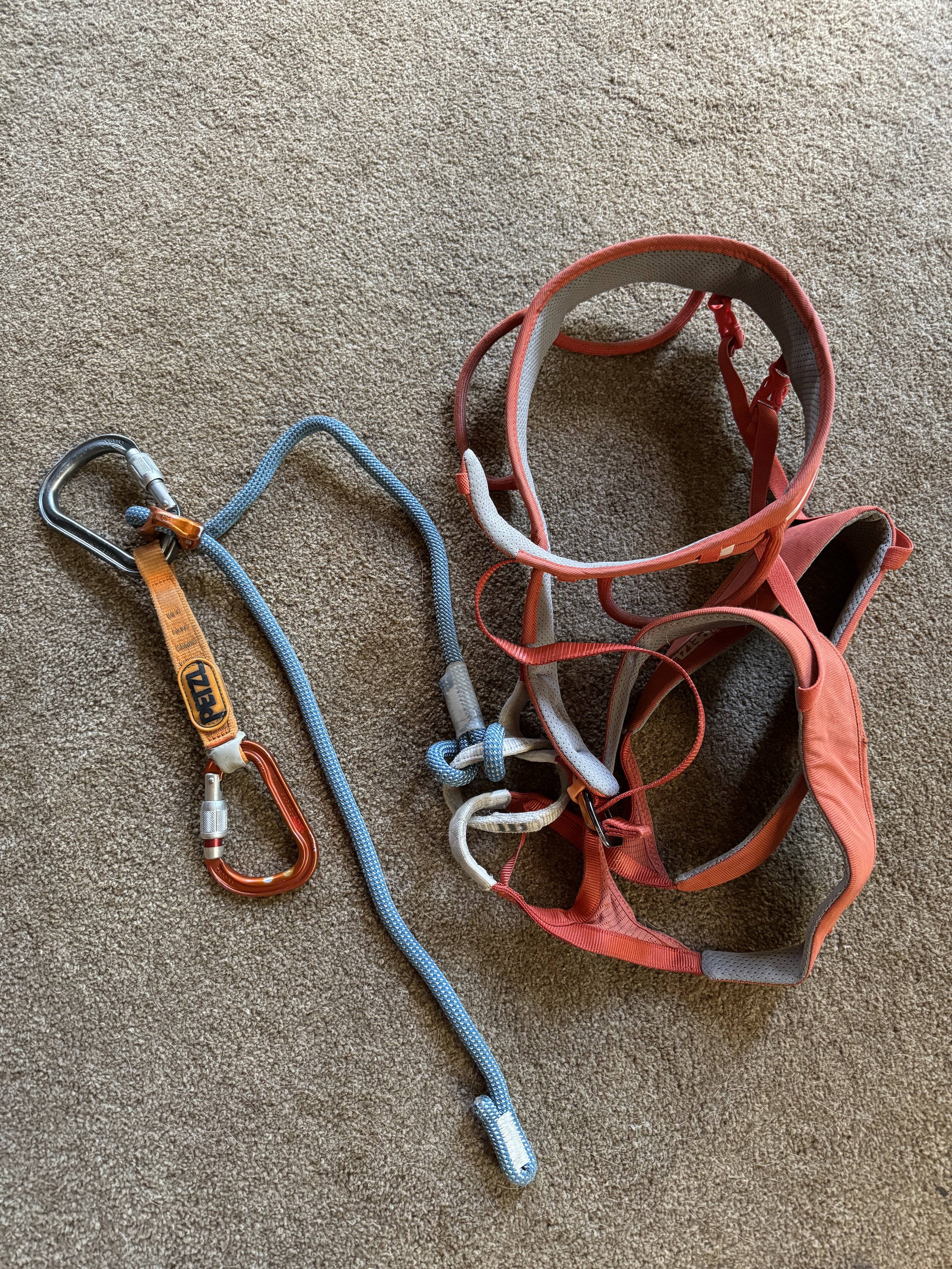Take aways from a successful Matterhorn season
Summing up a successful Matterhorn season
The well marked trail to the Hornli hut
This summer on the Matterhorn was a safe and successful season. Every time I go up there, I learn more about the route and become more efficient at guiding it. Here is a bit of history, strategy, and beta for the Hornli Ridge.
The most popular route on the Matterhorn is also the route taken on the first ascent of the mountain in July of 1865, the Hörnli Ridge high above Zermatt. The story of the first ascent of the mountain, made by a team of six climbers: Edward Whymper, Lord Francis Douglas, Charles Hudson, Douglas Hadow, guide Michael Croz, and two Zermatt guides, Peter Taugwalder and his son, is a story of success and tragedy. Although Edward Whymper and his team of six others made it to the narrow summit, not all of them made it down. While descending the mountain, Douglas Hadow slipped and pulled Charles Hudson and legendary Chamonix guide Michael Croz off the mountain and down the north side to their deaths. An interesting fact about the mountain is that in 1881 President Theodore Roosevelt was guided up the Hornli ridge by two guides, one of whom was Peter Taugwalder of the first ascent team.
The first ascent of the Matterhorn
July, 14 1865
Fortunately, today the route is much cleaner due to traffic; in fact, the best way to find your way up the route is to follow 150 years of crampon scratches in the gneiss. Most of the steep climbing is eased with fixed ropes and iron rungs, making the climbing aspect of the route technically quite easy. Still, due to the challenging route finding and the fact that you have to climb up and down 4,000’ in a day, climbing the Hörnli is a big bite.
The standard strategy on the Hornli Ridge is a formula that is tried and true.
Plan on a few days of training and acclimatizing on local peaks such as Pollux, Breithorn, Castor, and even a fun via ferrata above Zermatt to help ward off the jet lag and get dialed in for the ascent.. On the approach day, plan to catch the Matterhorn Express cable car around noon up to Lake Schwarzee and begin the two-hour trek up to the Hörnli hut at the toe of the route. Think of this day as an active rest day. This beautiful, well-marked hike is not without some exposure itself, and when covered in snow, it is an alpine adventure in its own right. Although the hike up to the hut only takes a couple hours, it is nice to arrive early so there is time to check in, then go preview the first hour or so of the route. The most complicated route finding on the ridge is the lower section leading up to the Solvey hut. Most of which you will be doing by headlamp, so it is nice to get a sense of it before you do it in the dark.
Pollux
With an altitude of 13,415 and the opportunity for scrambling and fixed line practice, Pollux is a great warm up peak.
Climbing day-
After a quick 0330 am breakfast, the local Swiss guides will head out the door first, followed by all the other international guides. After that, all the independent climbers can follow. Because the local guides know the route so well and the other guides can generally move their clients efficiently through the terrain, the line of climbers, spreads out surprisingly well. If you are moving well, there are plenty of places to pass other climbers and no one will be upset if you do. That being said, if people are on your heals, just step aside at an appropriate place and let them get by. Though it might feel like it when you leave the hut, it isn’t a race. Pay attention to where you’re going and what you are pulling on.
Sunrise just below the Solvay Hut
Climbing and descending 1,200 meters of rock and snow in a reasonable amount of time requires moving at a consistent 300-meter per hour pace. This rate should put you at the Solvay hut in about two hours and the summit in another two. Although you have gained more than half the altitude getting up to the Solvay, the climbing gets much steeper beyond that and, as a result, slows down a fair bit. In addition, on a busy day, the most congestion you will experience will be on the fixed lines high above the hut. If you are going up, inevitably there will be people coming down this bottleneck. Embrace it and go with the flow; don’t wait for people to come down, or you will be there too long. Just take the first opportunity to go up (and down) and be nice.
As you near the summit, you will pass by the patron saint of alpinists, Saint Bernard of Montjoux. Give him a kiss for good luck and walk the line between Switzerland and Italy to the narrow summit and your halfway point for the day.
Saint Bernard, the patron saint of alpinists
Take caution walking back along the summit spine and back down the snow slopes to the shoulder. Generally, the most accidents the mountain sees are on the descent. The snow on the upper slopes can get soft later in the day, people are tired from the ascent, and down climbing doesn’t always come naturally to people. 4.5-5 hours back to the hut is a good goal to shoot for, but better to miss the last cable car to Zermatt than to relive the harrowed first ascent story. Much of what you climbed up you will climb right back down, but it can also be much safer and sometimes faster to rappel certain sections. If you are doubtful about it, just rap it quickly and don’t waste too much time deciding. Remember to keep an eye out for the iron rungs you used in the morning, follow the crampon scratches, and if it feels off route, just stop and look around before you get too far off.
Matterhorn Summit
Here are some bullet point takeaways:
A locker draw with a large Willam locking carabiner on a Petzl Connect is a great setup for the up and down (see photo).
A 38-meter rope seems to be the sweet spot. This will allow for any climbing or rappelling you will want to protect.
A .5-#1 Camalot can be useful for the occasional spot belay or running protection.
Use a bladder for the day. I personally don’t like drinking hose water, but the fast-paced nature of the day makes it ideal. Also, keep bars or gels in your pocket to eat so you can get calories in without dropping the pack.
The day should take between 8 and 10 hours. 2 hours to the Solvay, and another two to the summit. If you are 3 hours or more to the Solvay, you should really consider going down. Descending should take a bit more time, but remember you have to catch the last cable car to town or you will have a long walk!
Previewing the first half hour or so of the route in the light will go a long way the next morning. Don’t count on following the Swiss headlamps; those guides are quick and can easily leave you in the dust!
Train appropriately; you will be climbing 300 meters an hour on the Matterhorn, so you should be able to do that on 4th class peaks at home.
The coffee at the Hörnli hut is terrible. Bring a couple of your favorite instant coffees to get your day started right.
PRACTICE DOWN CLIMBING!!!
The best pizza and after-climb hang in town is the North Wall bar. They are a low-key scene with a roof-top ping pong table!
The Matterhorn museum is worth a visit.
Petzl Connect setup
This set up allows me to quickly connect myself to the large iron eye bolts, and at the same time provide a place to use a Munter hitch. I also use the large Willam locker to clip into the ropes via ferrata style for some added security.







